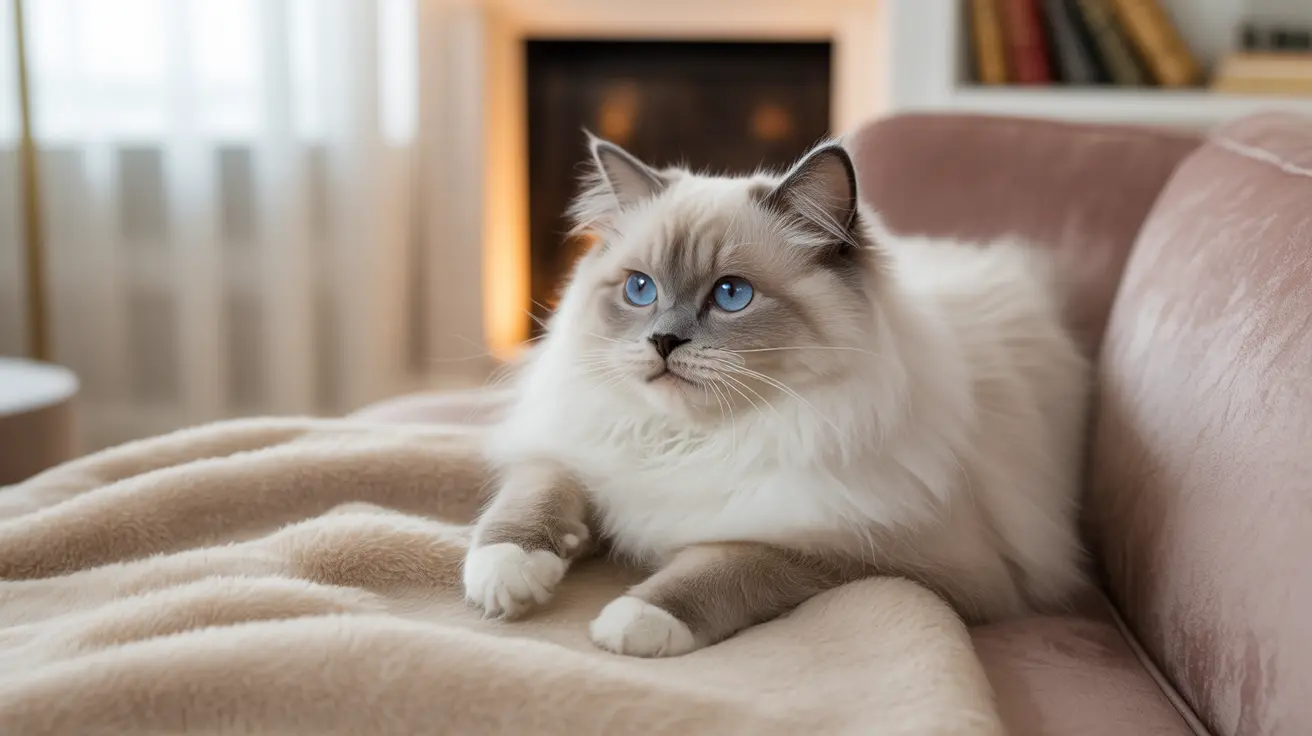The Kitten Connection: Origins of Kneading Behavior
The roots of kneading behavior can be traced back to a cat's earliest moments of life. When nursing, kittens instinctively knead their mother's belly to stimulate milk production. This natural action helps ensure their survival while simultaneously creating a strong emotional bond with their mother.
This early association between kneading, nourishment, and comfort creates such a powerful positive connection that many cats continue the behavior long into adulthood, even when there's no practical purpose for it.
Adult Kneading: More Than Just Nostalgia
When adult cats make biscuits, they're engaging in a behavior that serves multiple purposes. The action can indicate contentment, mark territory, or even help prepare a resting spot. Here's what your cat might be communicating when they knead:
Expressing Comfort and Happiness
When your cat kneads your lap or a favorite blanket, they're often expressing deep contentment and trust. This behavior typically accompanies purring and can indicate that your cat feels safe and secure in their environment.
Marking Territory
Cats have scent glands in their paw pads, and kneading helps them leave their mark on surfaces they consider their own. This territorial marking is usually subtle and harmless but important for your cat's sense of security.
Managing Your Cat's Kneading Habit
While kneading is natural and healthy, some cats can get quite enthusiastic about it, potentially causing discomfort with their claws. Here are some ways to make the experience more comfortable for everyone:
- Keep your cat's claws trimmed regularly
- Provide dedicated kneading blankets or pads
- Gently redirect excessive kneading to appropriate surfaces
- Never punish your cat for kneading, as it's a natural behavior
The Social Significance of Kneading
Kneading can also serve as a form of social bonding between cats and their human family members. When your cat kneads you, they're often treating you as they would a trusted family member, showing affection and claiming you as part of their social group.
Frequently Asked Questions
Why do cats knead or "make biscuits" on soft surfaces like blankets and laps?
Cats knead soft surfaces as an instinctive behavior that stems from kittenhood nursing. The action provides comfort and helps them create a cozy spot for rest while marking their territory with scent glands in their paws.
What does it mean when my adult cat kneads me with their paws?
When an adult cat kneads you, it's typically a sign of affection and trust. This behavior indicates they feel safe and comfortable in your presence, often considering you part of their family group.
How can I safely handle my cat's kneading if their claws hurt or scratch?
Keep your cat's claws trimmed, place a thick blanket between you and their paws, or gently redirect them to a designated kneading surface. Never discourage the behavior entirely, as it's an important form of expression for cats.
Is kneading a sign of stress, comfort, or territory marking in cats?
Kneading is primarily a sign of comfort and contentment, though it can serve multiple purposes including territory marking. It rarely indicates stress unless accompanied by other anxious behaviors.
Why do some cats continue kneading into adulthood while others stop?
The continuation of kneading into adulthood varies among individual cats and may be influenced by early experiences, personality, and environmental factors. Some cats maintain this behavior throughout life, while others may do it less frequently or stop entirely.
Conclusion
Whether your cat occasionally makes biscuits or is an enthusiastic kneader, this behavior represents a fascinating blend of instinct, emotion, and communication. Understanding and appreciating this natural feline behavior can help strengthen the bond between you and your furry friend while ensuring their emotional needs are met.






